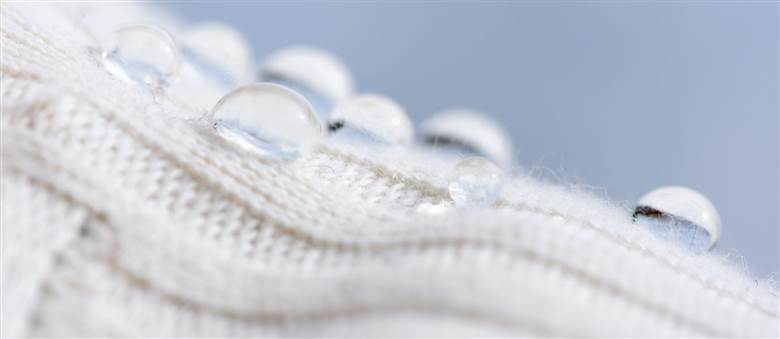Aalto researchers make water-resistant, breathable wax coating

Aalto University researchers have developed a non-toxic wax coating that leaves garments water-resistant without impairing breathability. The coating, made primarily of carnauba wax found in the leaves of Brazilian palm trees, performed well against chemical coatings in waterproofing and breathability but less so in withstanding washes.
“We tested the coating on different textile materials: viscose, tencel, cotton, hemp and cotton knitwear,” said Aalto University PhD student Nina Forsman. “We found that the surface roughness of textiles affects how well it repels water — the rougher the surface, the better. This is because, on a rough surface, water droplets contact the textile surface in a smaller area.”
The researches conducted tests to compare the breathability of textiles treated with natural wax against textiles treated with commercial products. Both textiles performed well in terms of waterproofing, but the ecological wax coating was found to retain better breathability.
The wax struggles, however, when it comes time to wash the coated textile. Researchers found the wax is not resistant to detergent washing, concluding the coating is better suited for less-frequently washed outer garments such as jackets. (They suggested consumers could perhaps re-apply the coating after every wash, though that idea requires additional research.)
Researchers also looked at the effect of drying temperature, determining that the best water resistance is obtained when the drying temperature is lower than the melting temperature of the wax.
The wax coating, which was processed using cationic starch, can be applied by dipping, spraying or brushing; the team found dipping more suitable for smaller items of clothing and spraying or brushing to be better for larger ones. They predict that for industrial-scale production, wax treatment could be part of the textile finishing process along with the colour pigmentation of the wax, so that dyeing and waterproofing occur at the same time.








